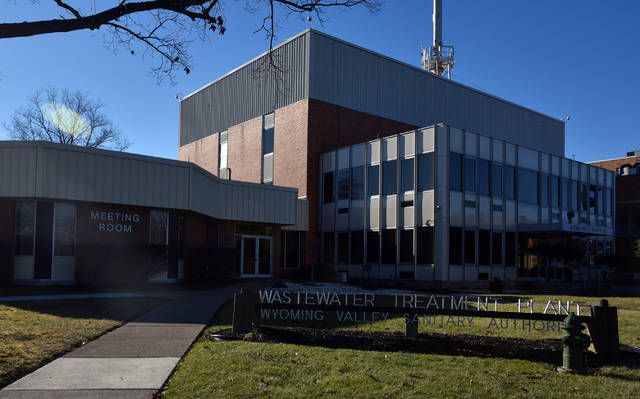Click here to subscribe today or Login.
The Wyoming Valley Sanitary Authority has released a 346-page report outlining proposed pollution reduction work to be funded by a controversial new stormwater fee.
Posted at www.wvsa.org, the plan is required to obtain state Department of Environmental Protection (DEP) permits needed to proceed. The new document is a more extensive, amended version of an initial proposal that had been compiled by authority consultant Herbert, Rowland & Grubic Inc., of Harrisburg, in 2017, said authority Executive Director James Tomaine.
In response to directives from DEP, the authority altered the plan and is once again accepting public feedback, he said.
The plan also will be discussed at a public meeting at 4 p.m. Sept. 12 at the authority offices, 1000 Wilkes-Barre St. in Hanover Township. Comments can be submitted to Tomaine at this address — the ZIP code is 18703 — or [email protected] through Sept. 27.
Additions and changes were not highlighted in the new document. Tomaine said the authority is compiling a synopsis of the alterations that will be presented at the Sept. 12 meeting.
While the types of projects remain the same, more specifics about project sites, protocols and pollution reduction expectations have been added, Tomaine said.
Authority officials tried to present the technical plans in an understandable format that includes photographs and maps of proposed project sites, he said.
“Hopefully it reads like a book, not a mystery,” Tomaine said. “I told them not to make it a mystery.”
Projects were designed to lower specific targeted amounts of sediment, nitrogen and phosphorus in the Susquehanna River, and, ultimately, the Chesapeake Bay, as mandated by the federal government, officials have said.
Thirty-two municipalities in the Wyoming Valley signed up for the authority’s regional mandate compliance plan funded by a fee on property owners based on the nonabsorbant impervious area (IA) within their parcels, although participant Lehman Township may remain in the program in a special agreement because it obtained a waiver from the mandate.
The authority plans rain gardens, stormwater parks, retention basin alterations and waterway buffer zones to soak up and filter runoff. Street sweeping, catch basin cleaning and stream bank restoration are also part of the plan to reduce sediment washed into waterways.
More than 2.37 million pounds of sediment, phosphorus and nitrogen must be eliminated through the regional program, the plan said.
A summary of the estimated pounds of pollutants that will be removed annually by category to reach a target of 2.4 million pounds, the plan said:
• Basin retrofits, 696,200;
• Stormwater parks, 30,000;
• Restoration of eroding stream banks, 842,700;
• Street sweeping/catch basin cleaning, 800,000;
• Community-based projects, 34,000.
Basin retrofits
One major change in the new plan involves proposed alterations to the giant Toby Creek detention basin in Pringle.
The sanitary authority wants to trap sediment by channeling water through a more meandering path inside the basin, slowing the flow. Deep-rooted shrubs also would be planted on the basin floor to soak up nitrogen and phosphorus.
The initial plan projected the project would eliminate 3 million pounds of sediment.
Based on DEP consultation, the authority will receive credit for a significantly lower amount — 133,682 pounds — with the option to receive a higher tally if it proves the completed project is keeping a greater quantity of sediment out of waterways, according to the new plan and Tomaine.
The Toby basin project hinges on authorization from the U.S. Army Corps of Engineers and the county Flood Protection Authority, which owns the basin. Army Corps’ approval may take an additional nine months to a year, and the authority did not want to officially seek its permission until the state issues a permit.
Additional basin projects, new and retrofitted, are listed in the amended report: four in Swoyersville on Townsend Avenue and Creek, Dana and Simpson streets; two in Jenkins Township on Main Street and at the Pennsylvania Turnpike Northeast Extension; and the Wyntree Oaks basin on East Saylor Avenue in Plains Township.





